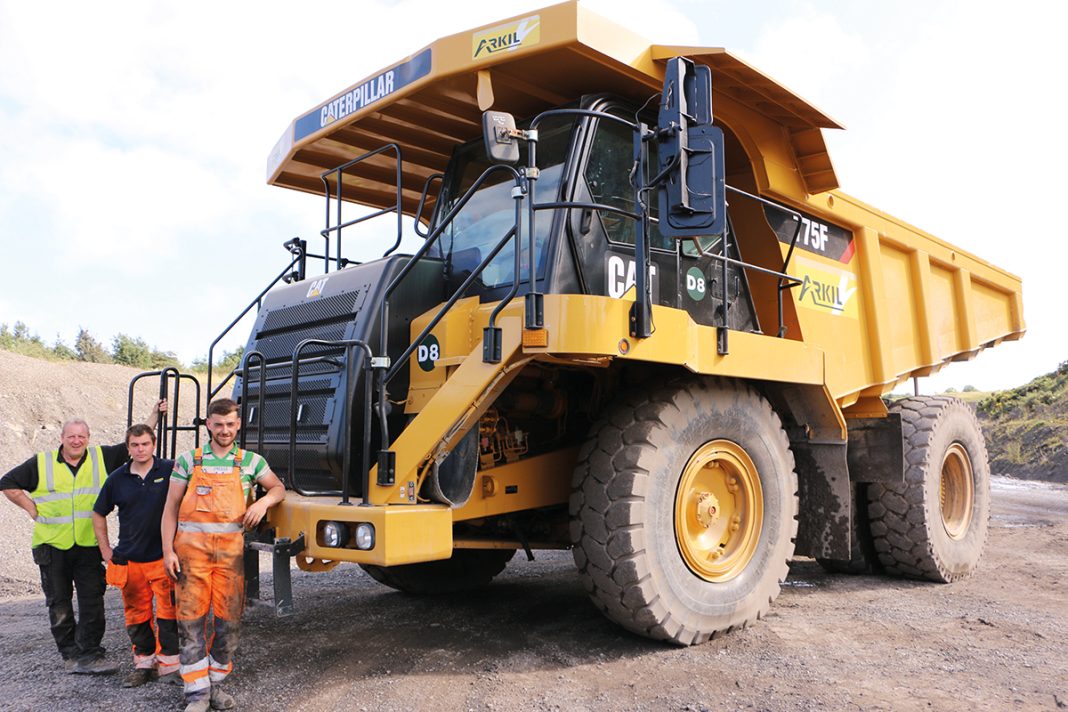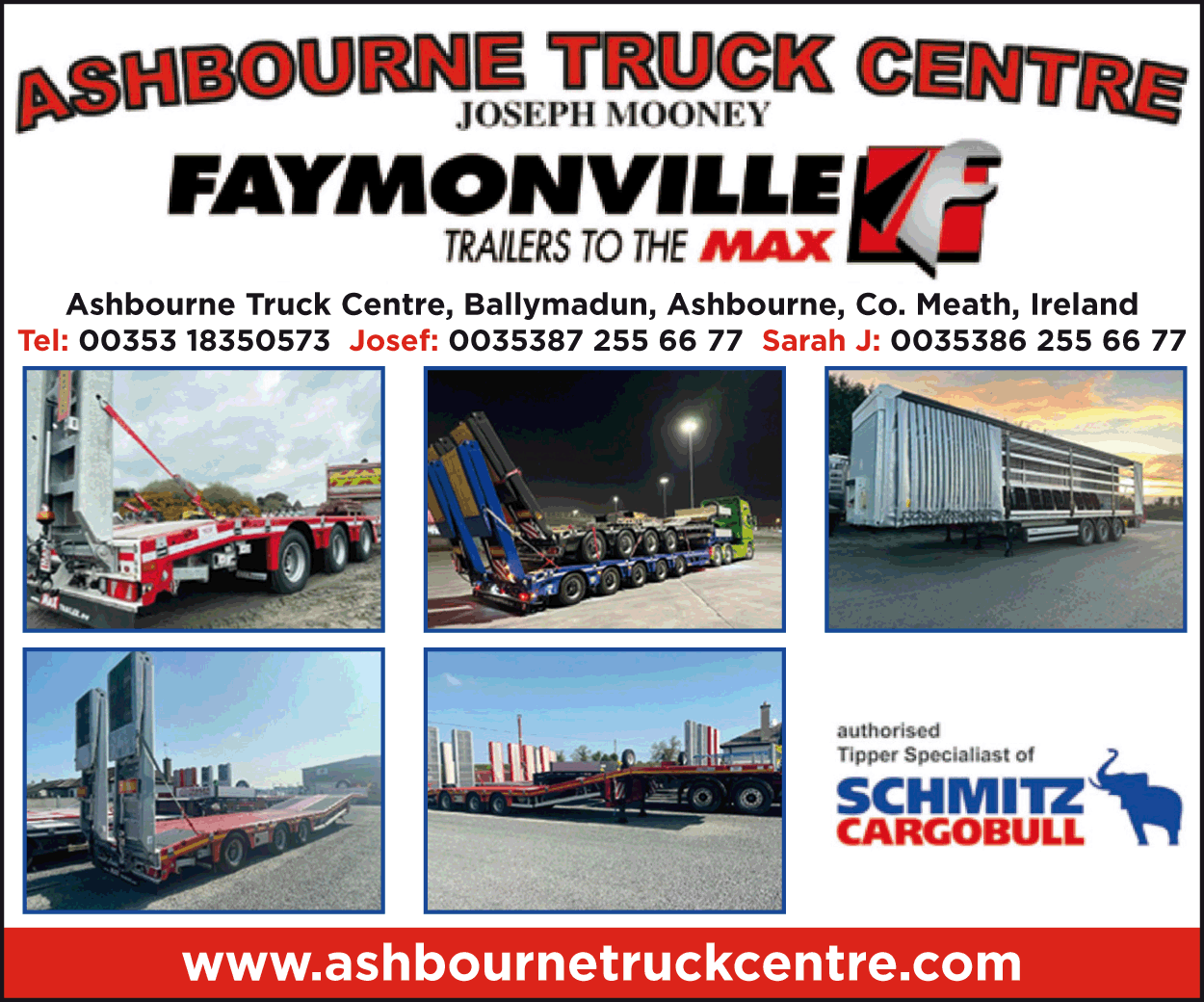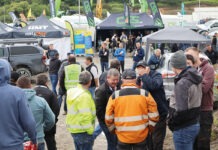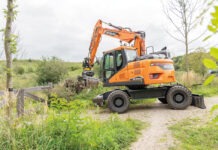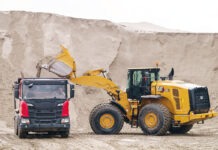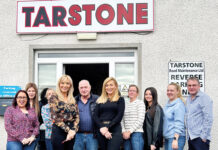In 2019 Arkil Ltd bought a used 2006 vintage Cat 775F off road rigid dump truck to work in its challenging quarry environment. When it hit 21,500 hours in 2022 it was time for a full rebuild from Cat dealer Finning UK & Ireland. Matt Bailey reports.
Cat proudly boasts that its off road trucks are “Built to be rebuilt” and when you’re paying the big bucks for these massive machines that is a major consideration. A Cat 775F rigid dumper that was new in 2006 was bought by stone aggregates, natural stone and building stone quarrying specialist Arkil Ltd in 2019 with 16,000 hours on the clock.
When the big Cat reached 21,500 hours in 2022, Arkil’s plant and quarry manager Pat Gorey approached Cat dealership Finning to see if the dumper could be given an overhaul and what level of rebuild it would require.
Finning’s Dublin yard already had three rigid dumpers in for rebuilds so Arkil’s 775F was shipped over to Glasgow for a complete powertrain and hydraulic rebuild and a full paint job, all covered by a five year, 10,000 hour warranty. Essentially Finning rebuilt the Cat 775F so it is now as good as new, and at a fraction of the price of a new machine.
Tough environment
Arkil Ltd has been operating in Ireland since 1988 producing a range of construction products with an emphasis on highway materials. The company has three quarries in Kildare, Cork and Kerry, where all types of asphalts, macadams, stone aggregates, natural stone, building stone, clause 804, high PSV chips, high friction surfacing, anti-skid surfacing, sand, concrete and concrete blocks are produced in accordance with the most up-to-date specifications and standards.
The company’s main stated objectives are to produce and supply quality materials to the highest standards with safety, quality, protection of the environment and the wellbeing of its staff, neighbours and the public to the foremost at all times.
The company currently has 50 direct employees plus another 50 sub-contracted. Its main customers include local authorities, National Roads Authority, other state bodies as well as many main contractors and property owners.
The big rebuild
Finning reckons that choosing a rebuild over a new machine could offer savings of up to 40%.
Its Cat Certified Rebuild (CCR) programme produces a machine that is as good as new while being significantly cheaper than buying new, and customers get a machine with the latest technology and Cat genuine parts – including in the price, cab, performance testing and an updated warranty.
You even get a new serial number!
“You can restore your machine’s power train so it’s like-new again with our Cat Certified Power Train Rebuild programme,” the company says. “All powertrain components are completely disassembled and all critical engineering updates are included – so it feels like you have a brand new machine that’s ready to get the job done.”
And of course as the sole Cat distributer in Ireland and the UK,Finning can rightly claim to be the Cat expert and it has undertaken many Cat rebuilds over the years but one great new offering is that the entire rebuild process can now also be financed by Cat Financial.
The 10 step rebuild
The full Finning rebuild programme is a ten step process:
Step 1: Inspection/Evaluation
Finning performs fluid analysis, visual inspections and reviews maintenance/fluid analysis services to develop a customised rebuild plan and cost estimate. Certified Rebuild includes more than 350 tests and inspections.
Step 2: Disassembly
The machine or power train is disassembled. All hoses, belts, seals, gaskets, bearings, knobs, wiring, switches and gauges will be replaced with new parts. Remaining parts are inspected and measured against strict reusability guidelines. Parts that don’t meet the guidelines are replaced with new or Cat Reman parts— or reconditioned to meet specifications. Approximately 7,000 parts are replaced in machines; 3,000 in power trains.
Step 3: Reconditioning
This includes work not typically included in an overhaul. Frames are examined and, if necessary, straightened, welded and reinforced. Worn linkage pins and shaft bearings are replaced. Hydraulic systems are returned to their original levels of performance, reliability and cleanliness, meeting ISO 18/15. Electronic control modules and software are replaced.
Step 4: Engineering Updates
Improvements introduced after the original date of manufacture are incorporated.
Step 5: Repainting
The machine is repainted. Model identity graphics are applied. And a Cat Certified Rebuild decal is issued.
Step 6: New Serial Number or Product Identification Number
Certified Rebuild machines receive a new serial number or product identification number. The number identifies the machine and entitles the customer to a like-new standard warranty. As an additional bonus: according to Finning Certified Rebuild machines tend to capture significantly higher resale values.
Step 7: Customer Evaluation
The machine is delivered to the customer and their operator for evaluation. The rebuild process is not complete until the customer is satisfied with the performance of the machine or power train in its working environment.
Step 8: Power Train Tests
The engine, fuel system, transmission, torque converter, differential, final drives and radiator are inspected, reconditioned and updated with new or qualified parts. Each component is thoroughly bench tested before reinstallation.
Step 9: Reassembly
All critical torques, clearances and pressure settings are maintained and recorded during reassembly. Engine wiring harnesses are always replaced. Other wiring is replaced on full machine rebuilds only.
Step 10: Performance Testing
Quality control includes testing. Standard tests include: turbocharger boost, throttle response, stall speed rpm, transmission and steering clutch response, and hydraulic and pilot relief valve pressures. Contamination control procedures ensure the unit meets total system cleanliness of ISO 18/15. Instrument and operational testing ensure field and shop performance levels match.
WIth such a comprehensive and thorough rebuild programme might there be the possibility of producing a ‘Trigger’s Broom’ dumper? That is, one that has had every major component and part replaced or reconditioned so that it is effectively a totally different machine to the one originally sold (as famously happened with Trigger’s broom in the sitcom Only Fools and Horses)? One can only speculate…


